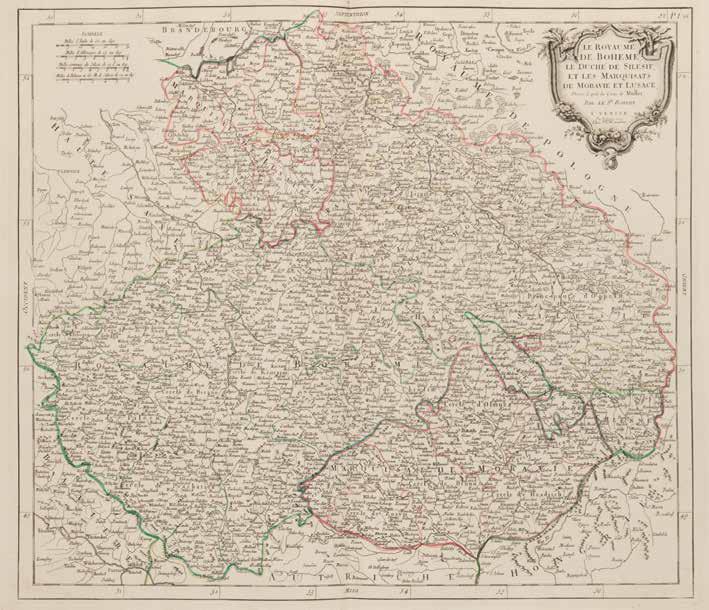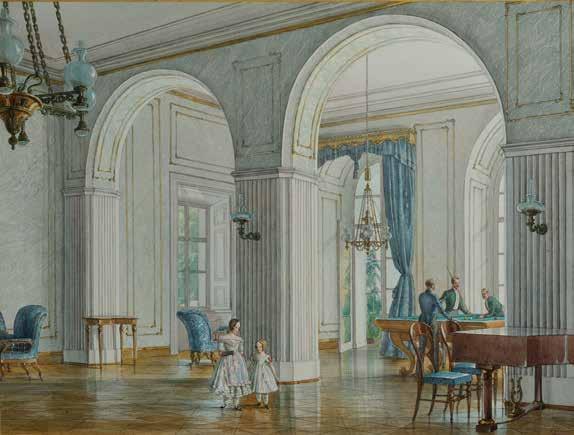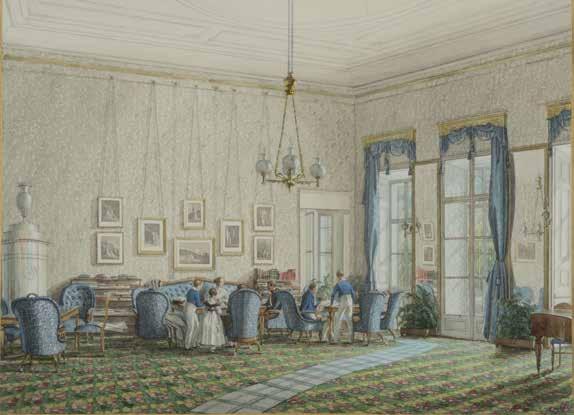find its way into his new symphony, which also explores the nature of heroism. Originally Beethoven thought to dedicate the Third Symphony to Napoleon Bonaparte, who was at first a hero to many who held democratic ideals. Beethoven was deeply disillusioned, however, when in 1804 Napoleon declared himself Emperor. He scratched out Napoleon’s name on his title page and instead dedicated it to his sympathetic and generous patron, Prince Lobkowicz. All the Lobkowicz resources of space, money and personnel were put at Beethoven’s disposal when it came time to prepare his unprecedentedly massive, difficult new symphony for performance. The Lobkowicz palace became Beethoven’s workshop as he directed the first rehearsals of what would eventually become known as the Eroica Symphony. A surviving account record dated June 1804 shows the hiring of 22 extra musicians, including the third horn player necessary for the Eroica, added to the six string players already on the Lobkowicz payroll. After private performances of the work in Lobkowicz’s Bohemian castles that fall, the symphony was offered in a January 1805 academy in the splendid hall of the Vienna palace. In 1806 Beethoven completed a staggering amount of important new music: the Fourth Piano Concerto, the three ‘Razumovsky’ Quartets, the Violin Concerto and the Fourth Symphony all came
56
| THE LOBKOWICZ COLLECTIONS MUSIC SERIES: HIGHLIGHTS
Account of expenses for extra musicians, including third horn required for Beethoven’s Third Symphony, approved by Prince Lobkowicz on 11 June 1804. The Lobkowicz Collections.
to fruition that year. In late summer, Beethoven visited the Silesian castle of Count Franz von Oppersdorff. An enthusiastic amateur, Oppersdorff kept a private orchestra that played the composer’s Second Symphony during his stay. Oppersdorff commissioned a new symphony from him, and Beethoven obliged with the Symphony in B flat. Though dedicated to Oppersdorff, the Fourth Symphony received its first Viennese performance in a concert hosted by Prince Lobkowicz. Contemporary reviews mention that in March 1807 two concerts devoted entirely to Beethoven’s music were held in the Lobkowicz palace; included were all four of his symphonies, a freshly composed overture for Heinrich von Collin’s tragedy Coriolan, the newly completed Fourth Piano Concerto and selections from his opera Fidelio. The Lobkowicz music collection preserves the parts for the Fourth Symphony that were used by the orchestra in those first rehearsals and performances. The manuscript parts were produced a month or two ahead of the concerts by court theatre copyist Wenzel Sukowaty (1746–1810), and Beethoven’s hand also appears in them, making corrections and adjustments for various instruments in the orchestra. Given the historic nature of the events, a few players even recorded their names on their parts. For example, the names of flautist Karl Scholl, a member of the court orchestra, as well as that of contrabassist Anton Grams from the orchestra of the Theater an der Wien – both musicians liked and trusted by the composer – appear. The extraordinary character of these concerts, presenting so much new music by a single composer, and music that posed so many unusual physical, intellectual and emotional challenges to player and listener alike, cannot be overstated. The role of Prince Lobkowicz and his ensemble in facilitating these performances was no doubt recognised by Beethoven, who within the next few years
BEETHOVEN’S NEW MUSIC IN LOBKOWICZ CONCERTS |
57





